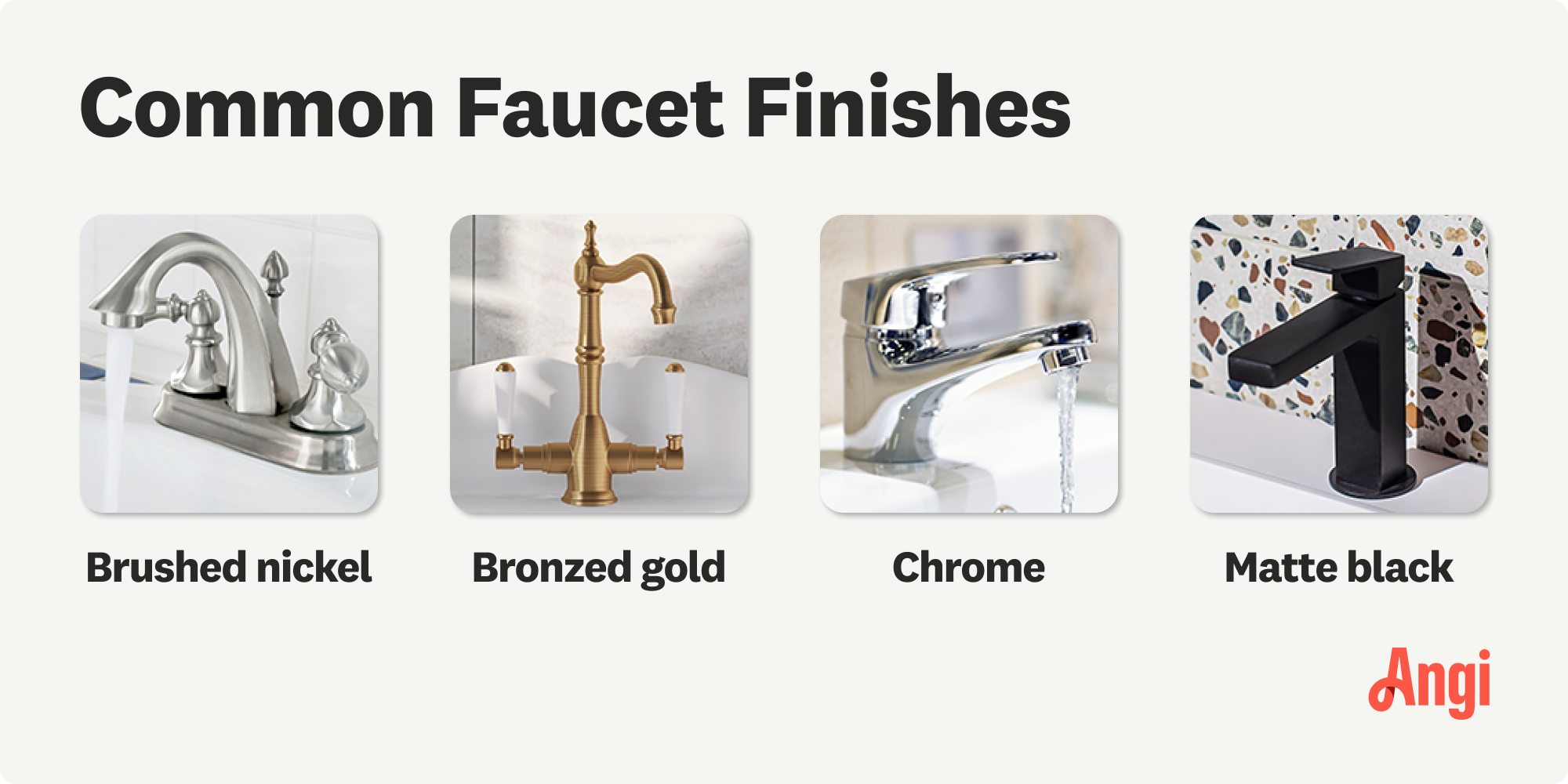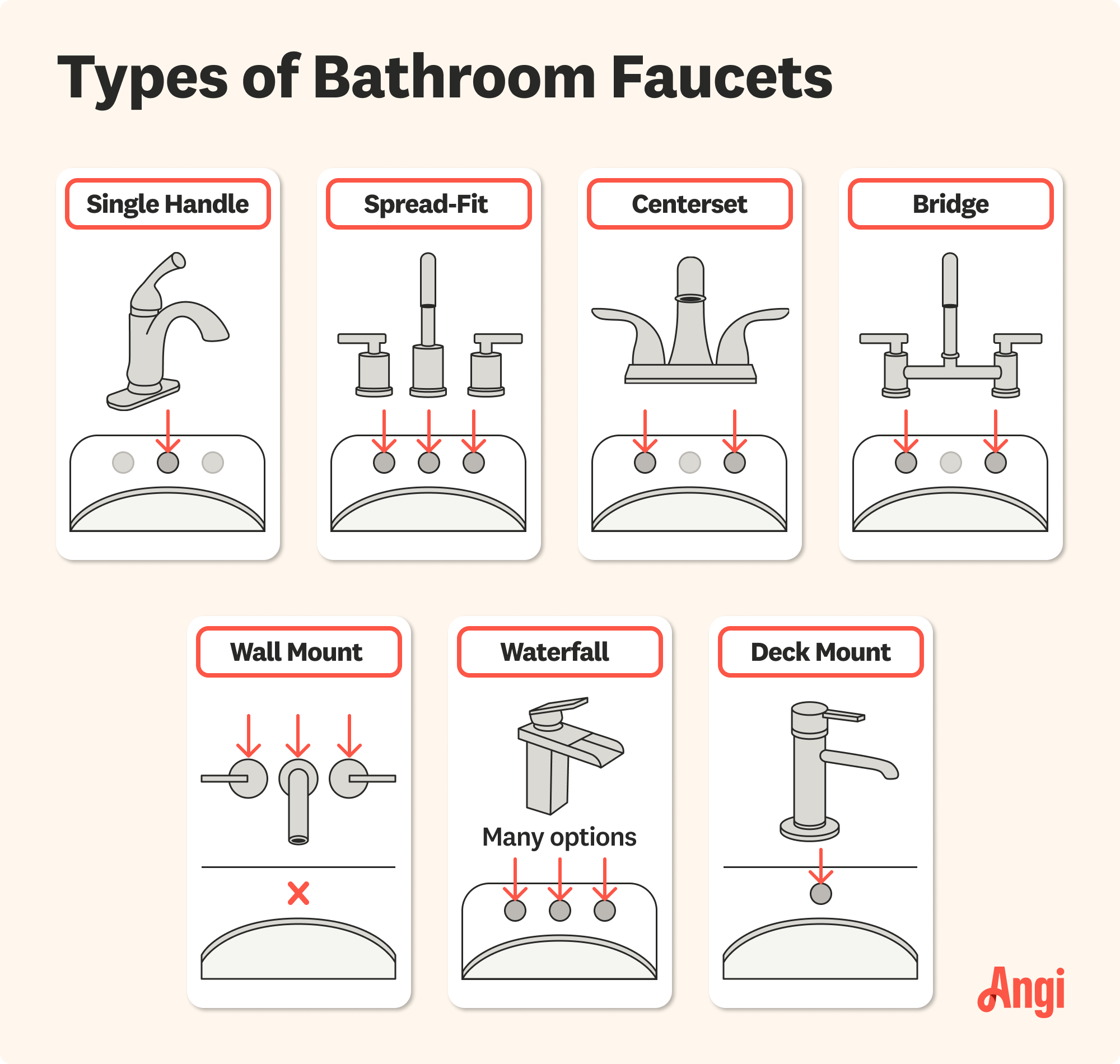
The cost to replace cast iron pipes depends on many factors, like size and accessibility. Use this guide to get a rough idea of how much you’ll spend.
The average cost to replace a bathroom faucet is $270, but it can cost between $170 and $360, depending on the faucet type and project details.


The type of faucet you choose and the finish play a large role in the overall installation cost, especially if you opt for a luxury material.
Labor costs to install a faucet range from $130 to $350, which will be added to the cost of materials.
The cost to replace a bathroom faucet will be higher if you choose to add features like filtration, lighting, and temperature control.
While a simple replacement could be an easy DIY project, it’s best to rely on a pro if you’re looking for a different faucet type to go with a new sink setup.
When it’s time to replace your bathroom faucet hardware, consider what you want from the space. If your bathroom serves as your oasis to escape from the world, replacing your bathroom faucet with luxury hardware is the perfect touch. Or you can select practical hardware that will stand up to anything your kids can throw at it.
Either way, expect to pay between $170 and $360 to replace a faucet in your bathroom, depending on the materials in use. Installing luxury materials could cost as much as $2,800.

Bathroom faucets will have a few different design options, each with a different cost.

Faucet hardware is available in several finishes, although most models only offer a few specific finish options. Common finishes considered basic in nature, like chrome or brushed nickel, will not affect the final cost much. Less common luxury finishes, like bronzed gold, significantly increase the hardware’s cost.
| Faucet Finish | Average Cost |
|---|---|
| Brushed nickel | $50–$125 |
| Bronzed gold | $200–$500 |
| Chrome | $50–$175 |
| Matte black | $100–$250 |
Common faucet materials are stainless steel, brass, zinc or zinc alloy, and plastic. While all of these materials are a good choice, stainless steel faucets are the most common. When choosing brass faucets, check for certified lead-free options. And while zinc or plastic options may work for some people, it’s not the most durable or long-lasting.
| Faucet Material | Average Cost |
|---|---|
| Stainless steel | $50–$200 |
| Brass | $200–$600 |
| Zinc | $20–$50 |
| Plastic | $15–$30 |
The labor cost for a faucet replacement is $130 to $350. This may include disposal of your old faucet, although you should check with your local faucet installer who can quote the job for you.
Removing your existing faucet costs $30 to $80. Often, removal is included in the installation cost.
Faucets can do more than just be an on or off water switch. Newer models can shine lights, play music, and more. Consider some of these additional features when replacing your faucet:
Filtration: If you always need a glass of water next to your bed, consider adding a filtration system to filter your water. You can expect to pay $150 to $3,100 for an in-sink filtration system.
Lighting: Adding LED lights can cost $5 to $20 as long as you can find a DIY kit with hardware that fits your faucet. This can make it easier to navigate and use your faucet at night without turning on your bathroom lights. Some come with different programmable colors like neon blue, pink, green, and more.
Temperature control: For even more advanced options like pre-set temperature or the option to check your water usage, opt for smart faucets. These are usually touch-free or touch-activated and cost $200 to $1,200.
Depending on your exact needs, plumbing inspections cost $575 on average. If it turns out that you need to repair pipe leaks, it’ll cost $150 to $850. Other plumbing repair costs can range between $175 and $4,000.
A new bathroom sink installation costs $550 on average. The costs depend on the sink type you choose. If you want something simple, go with a pedestal sink for about $160. A bar sink or a drop-in sink costs $60 to $500, while undermount and farmhouse sinks cost $170 to $2,000.

Faucets cost $30 to $1,000 or more. The actual cost depends on the faucet type you decide to use for your bathroom, as well as the final material and brand name.
| Faucet Type | Average Cost Range |
|---|---|
| Single handle | $50–$550 |
| Center-set | $50–$250 |
| Widespread | $70–$600 |
| Vessel | $75–$600 |
| Wall mounted | $100–$400 |
| Touchless or Touch activated | $200–$600 |
| Traditional knob | $30–$300 |
| Cross sink | $70–$600 |
| Lever | $30–$600 |
| Joystick | $300–$1,000 |
| Push Button | $70–$125 |
Hiring a pro to replace a bathroom faucet will cost around $130 to $350. This might seem hefty, but hiring a local faucet installer ensures it’s installed correctly. A properly installed faucet is less likely to leak and cause water damage to your bathroom.
Replacing a bathroom faucet can be complex, depending on the accessibility and the type of faucet you choose. Here’s why you should hire a pro:
A professional knows the proper steps to replace a faucet, reducing the risk of mistakes.
Plumbers have the proper equipment and expertise to do the job right.
DIY mistakes can lead to leaks that cause expensive damage to your bathroom.
A reputable plumber or faucet installer usually provides a warranty for their work and carries insurance.
Faucet pros can complete the job safely, quickly, and efficiently.
A professionally installed faucet may add value to your home—especially if it’s part of a larger bathroom remodel.
Handy homeowners can often complete some of the components of a basic bathroom faucet replacement on their own. The following tasks are the most DIY-friendly:
Prepping the area by removing items around the faucet.
Purchasing the faucet and any additional supplies.
Cleaning up after the faucet replacement.
Minor faucet repairs, like tightening hardware.
If you’re looking at replacing a leaky faucet or an old faucet, here are some tips that could help you save a few bucks.
Try repairing your faucet first
Choose the most affordable fixture for your needs
Get at least three quotes from bathroom remodel pros
Prepare to discuss with a pro the types of faucets—including chrome, brushed nickel, and stainless steel—that will work with your budget.
If you have the budget to spare, talk with your pro about other upgrades you can make to your bathroom.
Be prepared to discuss additional faucet features, such as filtration or lighting, that may work within your budget.
Home is the most important place on earth, which is why Angi has helped more than 150 million homeowners transform their houses into homes they adore. To help homeowners with their next project, Angi provides readers with the most accurate cost data and upholds strict editorial standards. We extensively research project costs to develop the pricing data you see, so you can make the best decisions for you and your home. We rely on reputable sources, including the U.S. Bureau of Labor Statistics, academic journals, market studies, and interviews with industry experts—all to ensure our prices reflect real-world projects.
Want to help us improve our cost data? Send us a recent project quote to [email protected]. Quotes and personal information will not be shared publicly.
From average costs to expert advice, get all the answers you need to get your job done.

The cost to replace cast iron pipes depends on many factors, like size and accessibility. Use this guide to get a rough idea of how much you’ll spend.

Pipe leak repair costs depend on the location and severity of the leak, as well as the type of pipe being replaced. Use our guide to price out repair work.

Making updates to your home? You may need to move your gas line to fuel new appliances or meet code regulations. We’ll cover the cost of moving a gas line, plus project tips.

Learn how to remove a bathtub drain for cleaning or replacing, whether you’ve got a simple toe-touch stopper or a more complicated trip-level model.

Most homeowners will eventually need to replace bathroom hardware. This guide breaks down bathtub faucet installation costs, so you can upgrade your bathroom.

Finding frozen pipes involves using all of your senses to listen for, smell, and see the signs. Keep reading to learn how to find frozen pipes in your home.